Culinary traditions during Ramadan further enrich this transformative experience, showcasing diverse cultural expressions of devotion and hospitality
Ramadan, the holy month in Islam, holds immense significance for Muslims worldwide. During Ramadan, a period of devotion, restraint, introspection, and kindness, commencing on 12 March this year adherents of Islam abstain from consuming food and beverages, including water, from sunrise until the call to maghrib prayers at dusk. Those fasting in Ramadan typically partake in two meals — Sehri before dawn and Iftar after sunset — with culinary traditions varying across regions and cultures.
You Can Also Read: Awami League sets example of Devotion with Low-Cost Market for Ramadan
The fast is broken daily with a meal known as iftar, traditionally commencing with dates and water. The subsequent dining experience serves as an opportunity to bond with family, community, and heritage through meticulously prepared dishes, often utilizing cherished ancestral recipes and cooking methods such as slow cooking, charcoal-grilling, and baking. Eid-ul-Fitr marks the conclusion of Ramadan, celebrated with a special meal eaten during daylight hours for the first time in a month.
We, Bangladeshis boast a rich food culture, particularly during iftar that includes a variety of delectable items such as beguni, piyaju, jilapi, haleem, birianis, kebabs, and more! To embrace the diversity of the global Muslim community, we’ve curated a selection of popular Ramadan dishes from around the world. Let your iftar table reflect the culinary richness of Muslims worldwide.
10 Famous Iftar Items Around the Globe
From robust Moroccan soups to nourishing Bedouin-style stews and sweet Indonesian treats, here are 10 delectable iftar options from across the globe to savor during Ramadan.
1. Middle East: Shorbat Adas
In the UAE, Jordan, and Lebanon, a typical iftar for numerous Muslims commences with a soothing bowl of hot Shorbat Adas, also known as lentil soup, accompanied by crispy pitta bread. Featuring red lentils and seasoned with turmeric, cumin, cinnamon, parsley, and lemon (variations may occur depending on the region), this protein-packed Shorbat Adas promptly satisfies hungry stomachs during fasting. To enhance its nutritional value, one incorporates carrots, onions, and potatoes into the lentils before blending the soup.
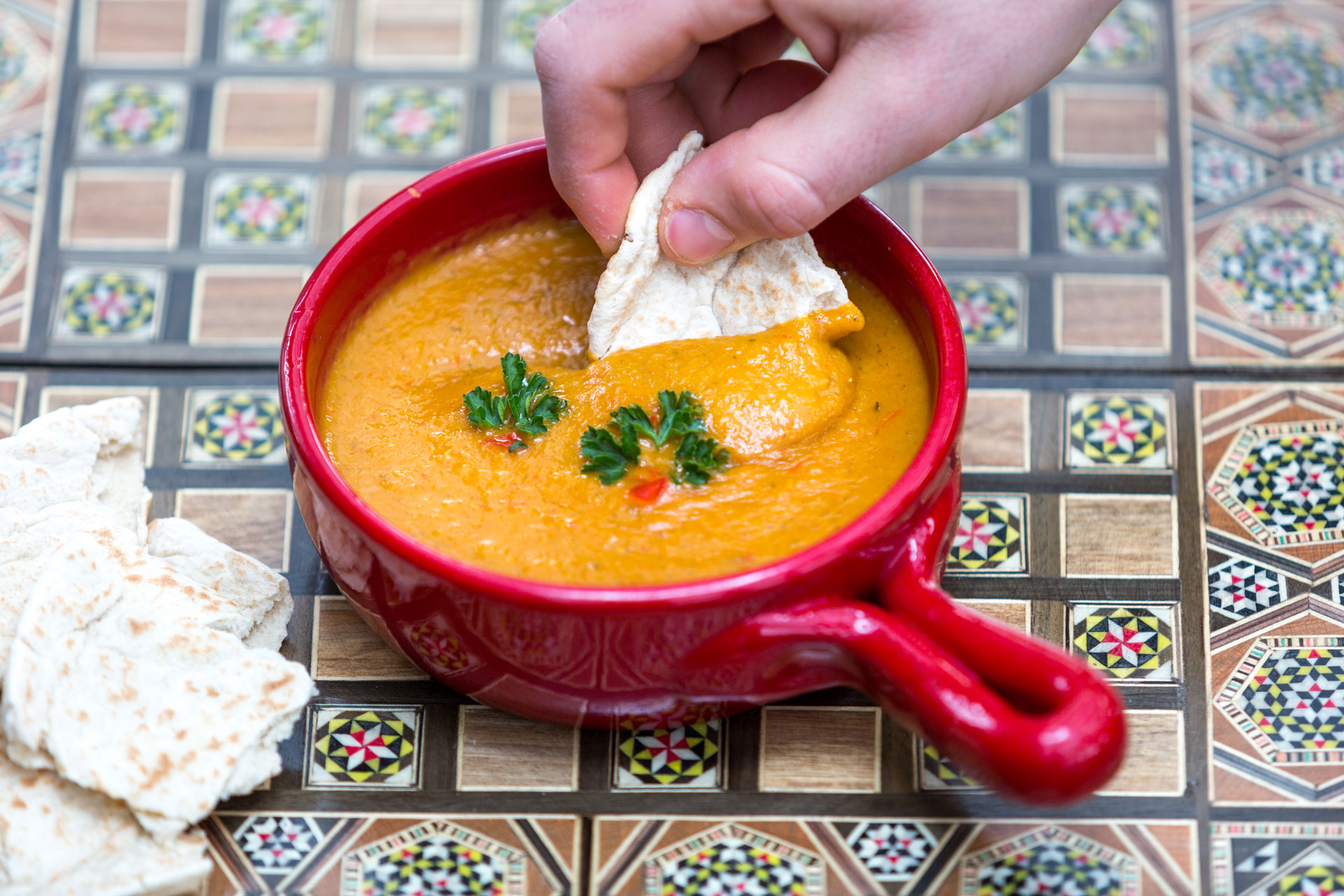
2. Morocco: Harira
This hearty soup derives its name from the Arabic term for ‘silky’. Typically it is served with dates. In Morocco, harira presents a blend of lentils, chickpeas, meat, and vermicelli within a thick, flavorful tomato broth that begins to simmer in kitchens come late afternoon. Its velvety texture is achieved through tedouira, a thickening element composed of flour and water, incorporated while the soup is stirred. Each household prepares the dish uniquely, some favoring rice over broken vermicelli, or beef over lamb; the combination of herbs and spices—cinnamon, turmeric, saffron, cumin, coriander, parsley, celery, and ginger—also varies. Every spoonful offers a burst of flavor, making chebakia, a sweetened sesame cookie, an ideal complement.
:max_bytes(150000):strip_icc():format(webp)/classic-moroccan-harira-soup-2394920-hero-01-ffd8665c225c48c4a45c4314e96821b2.jpg)
3. India and Pakistan: Shami Kebab
During Ramadan evenings in India and Pakistan, the scent of aromatic shami kebabs fills the air, drawing locals to bustling street stalls where they can witness the preparation of this flavorful meat snack. These delectable mutton patties, infused with cardamom, are said to have originated in Lucknow, India, where they were purportedly created for a voracious nawab lacking teeth during the 18th and 19th centuries. The meat, whether lamb or beef, is combined with chana dal or Bengal gram, and seasoned with a blend of garlic, ginger, cinnamon, peppercorns, cloves, cumin, mint, coriander, and green chilies. Coated in egg, the patties are then shallow-fried until they achieve a crispy exterior and a tender interior that almost falls apart. To complement these kebabs, they are typically served with mint-coriander chutney, ketchup, and onion rings.
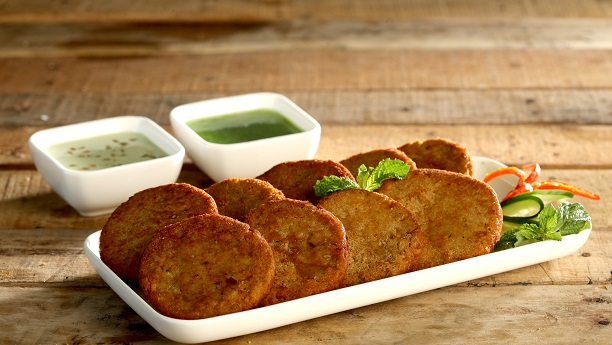
Samosas, a beloved snack throughout South Asia, commonly feature fillings of mashed potato or minced meat seasoned with cumin, coriander, and garam masala. While the potato variation is enjoyed year-round in places like the streets of Mumbai and the markets of Lahore, during Ramadan, the keema (minced lamb) samosa garnished with mint-coriander chutney and tangy-sweet tamarind chutney gains particular popularity. With its reputed Persian origins, this adaptable treat can be either fried or baked and accommodates diverse flavors and fillings, including feta, spinach, or minced beef. Variations like the samosa in Central Asia and the sambousek in the Middle East showcase the snack’s regional adaptations.
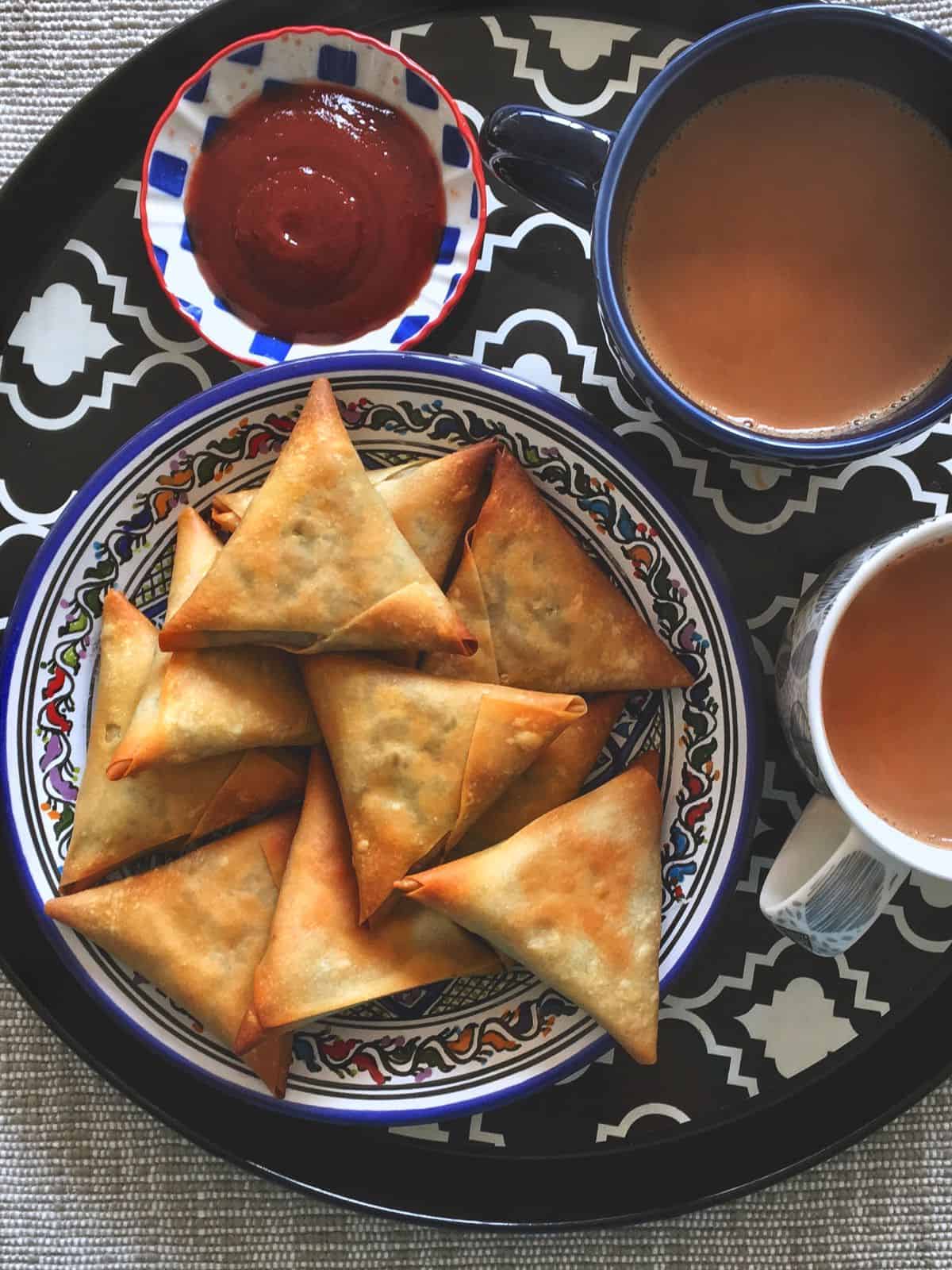
4. Somalia: Nafaqo
Nafaqo also referred to as kebabs, stands out as a renowned dish in Somalia, boasting a delightful blend of eggs and potatoes that lend it a tender texture. This nutritious delicacy finds its place both as a centerpiece and a complement on the dining table. Its diverse variations, often accompanied by flavorful gravies, are savored not only in Somalia but also in South Asian nations like Pakistan.

5. Spain: Gambas Al Ajillo
Gambas Al Ajillo serves as the quintessential essence of southern and central Spain, renowned as one of the finest dishes for iftar during Ramadan, where its seafood element elevates its flavor profile. Its composition boasts halal ingredients, appealing particularly to the iftar traditions of Muslims. The name Gambas al Ajillo, literally meaning garlic shrimp, succinctly encapsulates its preparation. Its simplicity allows for a quick make, requiring a mere 10 minutes of preparation time.
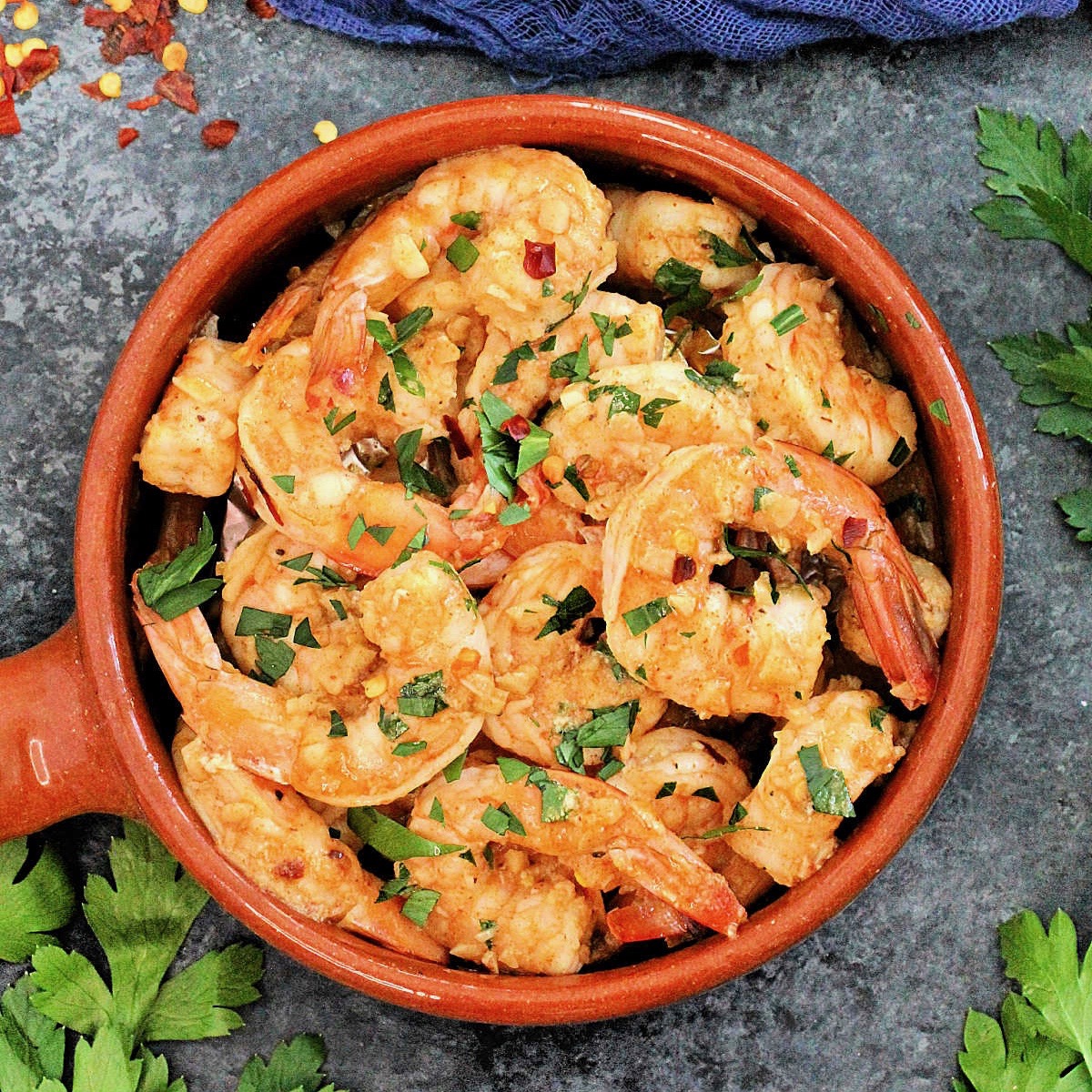
To prepare it, sizeable, juicy shrimp are selected, complemented by garlic, olive oil, red pepper flakes, paprika, and a dash of lemon juice. While preparing the sauce, allow time for the shrimp to marinate, have to make sure the garlic is golden and not browned before adding the shrimp. For an added citrus punch squeeze fresh lemon juice.
6. Nigeria: Moi Moi
From Lagos to Abuja, this beloved dish for iftar consists of a savory, fluffy pudding crafted from mashed beans, enriched with a high-protein element such as eggs, beef, fish, or prawns. To prepare moi moi, black-eyed peas or honey beans, known for their gentle sweetness, are peeled, seasoned, and blended with Romano peppers, scotch bonnets, onions, and water, then mixed with the cooked protein. The mixture is then poured into banana leaves, plastic containers, or sealed ramekins and steamed in a sizable pot of water until it solidifies into a cake-like consistency.

7. Indonesia: Kolak Pisang
In Indonesia, the evening commences on a delightful tone with kolak, a concoction of palm or coconut sugar, coconut milk, pandan leaves, and assorted fruits, served either warm or chilled. This dish allows for the incorporation of various fruits according to preference and serves as a revitalizing treat following a day of fasting. When bananas are sliced and boiled with milk and sugar, these transform into kolak pisang. Additionally, sweet potatoes, cassava, jackfruit, and sugar palm fruits are commonly included in the mix.

8. Turkey: Ramazan Pidesi
As the sun sets, residents gather at local bakeries in the neighborhood to purchase freshly baked Ramazan Pidesi, a circular, yeast bread whose aroma permeates the streets during the sacred month. In Turkey, this tender, warm bread is traditionally served with olives, cheeses, butter, and pastirma beef to break the fast. The dough is enriched with milk for a soft texture, then coated with a yogurt-egg mixture after rising and shaped by hand into round loaves. Following the creation of a diamond pattern on the surface, the loaves are sprinkled with nigella and sesame seeds before being baked. To maintain the bread’s softness, a tray of water is placed in the oven during preheating.
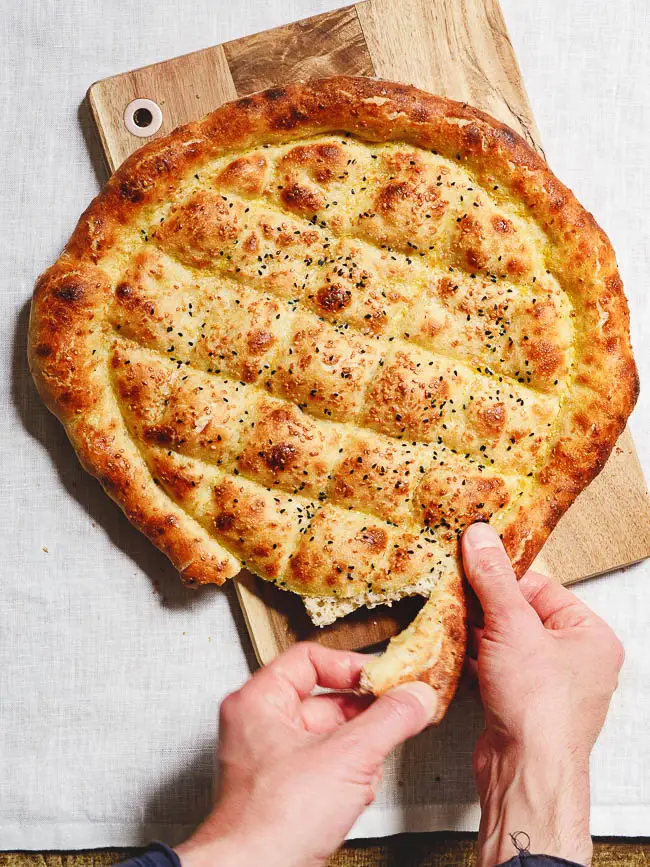
9. North Africa: Shakshuka
The egg-centric iftar recipes prove that eggs can be enjoyed beyond breakfast. Shakshuka, renowned in North Africa, holds appeal across Arab and Israeli cultures for its velvety blend of simmered onions and tomatoes. The delicately poached eggs add a nutritious touch, ideal for savoring with a spoon, fork, or pita. Complemented by red bell peppers, garlic cloves, paprika, cumin, chili powder, salt, and pepper, it offers a harmonious fusion of flavors.

10. Saudi Arabia: Thareed Stew
It’s almost a guarantee that a Saudi Arabian iftar will feature thareed, a hearty stew consisting of lamb and vegetables, renowned by some as one of Prophet Muhammad’s preferred meals, thus holding significant cultural importance in the region. The dish is meticulously prepared by simmering lamb with potatoes, carrots, and courgette in a flavorful blend of tomato, onion, and garlic paste along with stock, and seasoned with turmeric, dried limes, cardamom, coriander, cinnamon, red chili, and pepper. This aromatic stew is traditionally served atop layers of soaked regag, a thin flatbread.
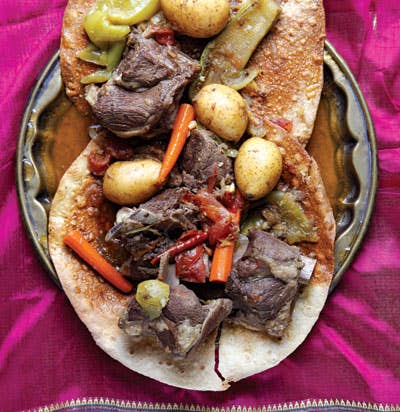
In conclusion, Ramadan represents a profound journey of spiritual growth, moral refinement, and communal unity for Muslims worldwide. Through fasting, reflection, and acts of kindness, believers strengthen their connection with Allah, foster compassion, and reinforce familial and societal bonds. Culinary traditions during Ramadan further enrich this transformative experience, showcasing diverse cultural expressions of devotion and hospitality.


